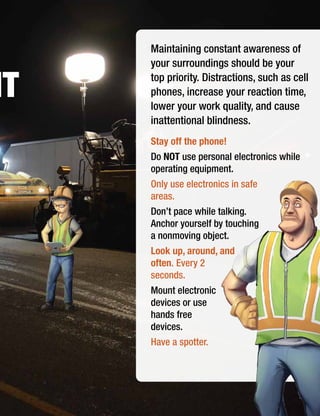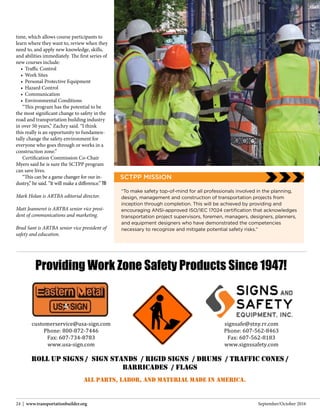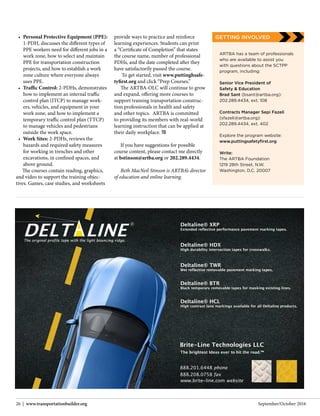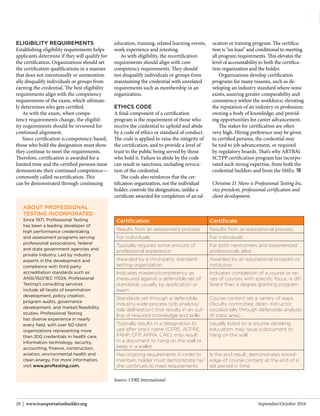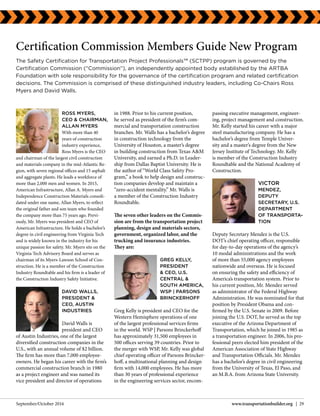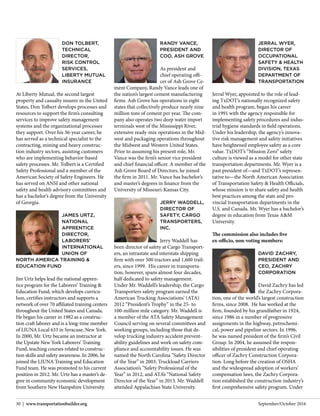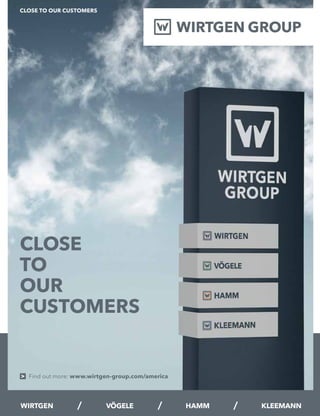This document summarizes an issue of the publication "Transportation Builder" from September/October 2016. The cover story discusses the launch of the new "Safety Certification for Transportation Project Professionals" (SCTPP) certification program developed by the American Road & Transportation Builders Association (ARTBA). The program aims to make all transportation construction projects worldwide zero-incident zones. It is designed specifically for the transportation industry and was developed by industry safety experts. Thousands of transportation professionals will be eligible for the certification, which covers a wide range of safety topics. ARTBA chairman David Zachry expresses support for the new program and thanks those involved in its creation.
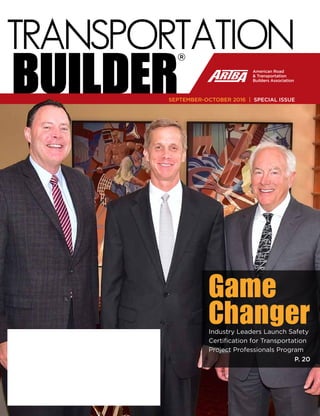



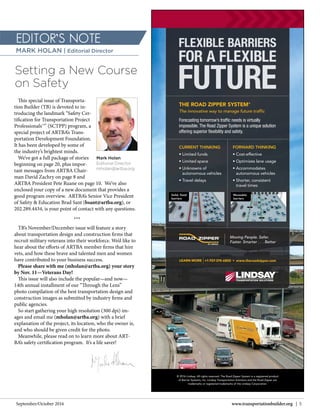
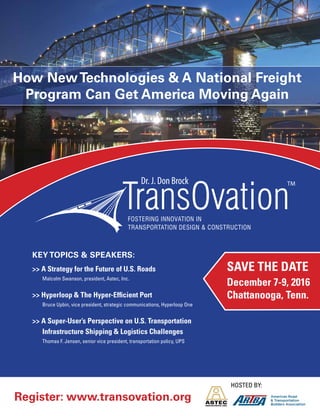


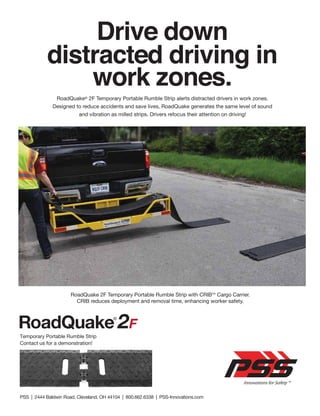



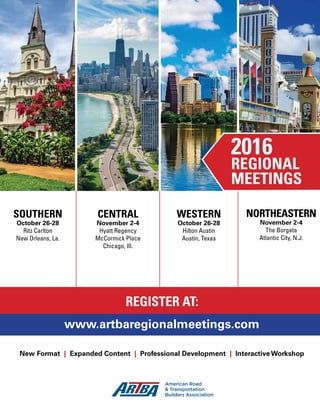

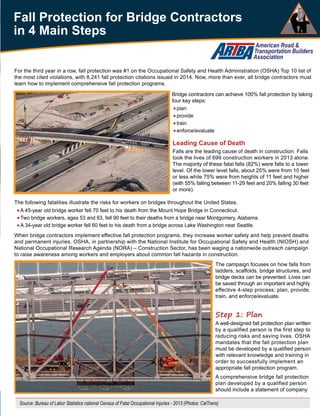
![September/October 201616 | www.transportationbuilder.org
At a minimum, each employee who might be exposed to fall hazards must be trained by a competent person who is qualified
in the following areas [29 CFR 1926.503(a)(2)]:
ARTBA’s Fact Sheet Guide to Selecting Fall Protection Systems for Bridge Work
provides detailed descriptions of fall protection equipment and a flow chart to aid
selection of fall protection in bridge work.
policy signed by the highest level of management. The company policy must clearly state employee and
supervisor responsibilities as well as enforcement measures and appropriate disciplinary actions. The
bridge fall protection plan must also be site specific, with a detailed list of fall prevention measures.
This material is based on work supported by the Federal Highway Administration under Grant Agreement No. DTFH61-11-H-00029.
Any opinions, findings and conclusions or recommendations expressed in this publication are those of the author(s) and do not necessarily
reflect the view of the Federal Highway Administration. This publication does not constitute a national standard, specification, or regulation.
ARTBA Work Zone Safety Consortium
American Road and Transportation Builders Association
National Asphalt Pavement Association
International Union of Operating Engineers
Community College Consortium For Health and Safety Training
U.S. Department of Transportation Federal Highway Administration
Texas A&M Transportation Institute
FOF Communications
American Association of State Highway and Transportation Officials
Fall Protection in 4 Steps (continued)
The bridge contractor should designate the competent person(s) in writing. The competent person(s) must:
Be responsible for implementing the fall protection plan
Have absolute authority over the fall protection plan
Have unquestioned authority to stop work and correct fall hazards
Oversee documented inspections where fall protection measures are utilized
Keep fall protection equipment maintenance records, records of prompt removal of defective equipment, incident reports,
accident investigations records, and employee training records
To protect employees working at 6 feet or higher above lower levels, employers
must provide the correct fall protection equipment for the job. To help prevent falls,
employers must also provide the correct types of ladders, scaffolds, and safety gear.
Step 2: Provide
Step 3: Train
The fall protection plan must include performing a thorough hazard analysis to determine the areas of risk and methods of
engineering out the hazards, if possible. (A Sample Fall Protection Plan for Bridge Work is available from ARTBA.)
Selection of fall protection systems should be made at this stage. Contingency plans and appropriate rescue equipment
should be selected. Finally, a method for enforcing the plan and evaluating effectiveness should be developed.
All fall protection systems and scaffold systems must be designed and/or installed
under the supervision of a qualified person. OSHA defines a qualified person
as one who “… has proven knowledge, skills, experience, education, certification, or professional standing
to solve or resolve problems related to the subject matter, the work, or the project.” [29 CFR 1926.32(m)]
The nature of fall hazards in the work area
The correct procedures for erecting, maintaining, disassembling, and inspecting the fall protection systems
The use and operation of guardrail systems, personal fall arrest systems, safety net systems, and/or other protections
The OSHA fall protection standard
ARTBA offers training products and informational documents, including an Employee Fall Protection Training Record, to
help bridge contractors deliver and document required fall protection training for employees.
The company fall protection program must contain mechanisms for enforcing requirements and evaluating the effectiveness
of the program. Enforcement mechanisms can include discipline within the normal chain of command, for example. Evaluation
can include comparison reviews of training records and policy infractions as well as analysis of any accidents that might occur.
Step 4: Enforce/Evaluate
Prepare to train employees by acquiring or developing a training program](https://image.slidesharecdn.com/septemberoctobertb2016-161013145911/85/September-October-tb_2016-16-320.jpg)


